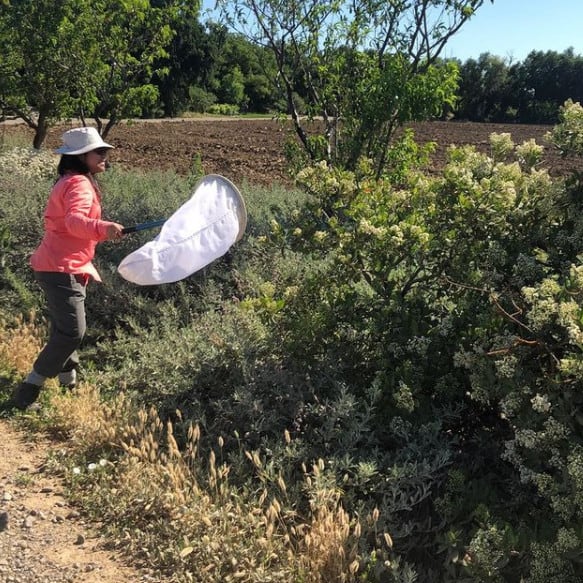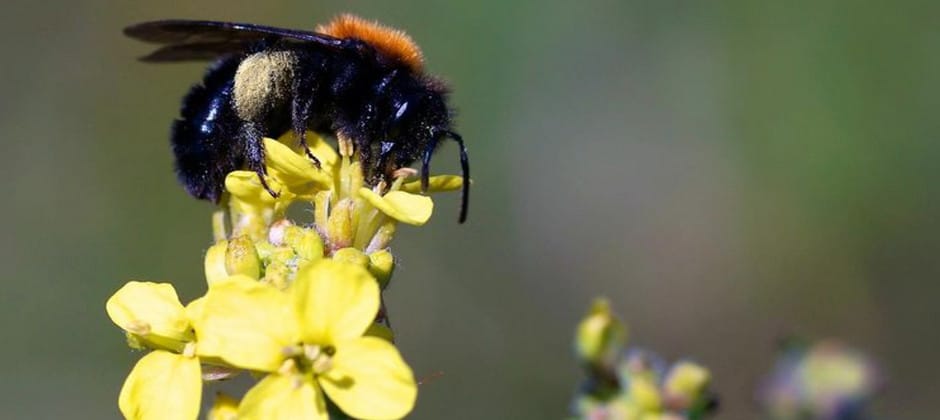Share this article
Flexible bees fare better
Bee species that can easily change their pollination behavior have a better chance of survival in an area of California that’s under stress from agriculture and climate change.
Intensive monoculture farming in the Central Valley has resulted in about a 90% loss of habitat for native bees, but researchers didn’t know which species they should be most concerned about.
“I think a big question a lot of people are asking right now is, what predicts which species are vulnerable to decline?” said Lauren Ponisio, an assistant professor at the University of Oregon. “That’s particularly relevant for bees because we don’t have historical data on what populations were like in the past, so it’s difficult to identify which species we should be concerned about.”
Ponisio and her colleagues set out to answer that question in a study published in Nature Ecology and Evolution led by her postdoctoral student Marilia Palumbo Gaiarsa. Ponisio was the senior author on the study.
The team observed bees in hedgerows that were added between farms about a decade ago. Over 10 years, the team recorded 1,150 bumblebee interactions for a total of 157 native bees and 152 plants at 63 sites. Of those interactions, they analyzed pollination activities from 31 species on five different plants.

A field technician samples bees in a hedgerow. Credit: Ponisio Lab
Ponisio and her colleagues wanted to find out whether the species they were looking at were generalists or specialists when it came to plants. But they also wanted to consider how flexible the species were — their plasticity — to modify their interactions with flowers. They figured a species with more flexibility would be more able to take advantage of whatever flowers were available.
While they couldn’t find any historical data on the bees to see what past behaviors were, the 10-year-long study allowed them see which bees persisted across the landscape. The team looked at a few different things when reviewing their observation data. They looked at which flowers each bee species was visiting and if the bees were able to shift to different flowers, or if they specialized on a specific one. Then, they looked to see if bees switched their pollination roles, visiting peripheral areas at one time and central areas at another. Lastly, team also looked at the bees’ contribution to the network structure on a macro scale.
They found that bee species that could change their position in their network resulted in higher species colonization and greater occupation of habitat patches.
However, they also found that species with more flower variability colonized less of the landscape. While they first thought the ability to switch to different partners would be a positive, Ponisio said that could actually mean they aren’t getting the nutrition that they need.
Ponisio hopes this information, along with past research on things like bee body size predicting fewer bee species colonizing an area, can help researchers determine which species may need more conservation help. “This is another layer that helps predict species at risk,” she said.
Header Image: Image Caption: A black and orange Andrena enjoys a Brassica flower. Credit: Ponisio Lab








